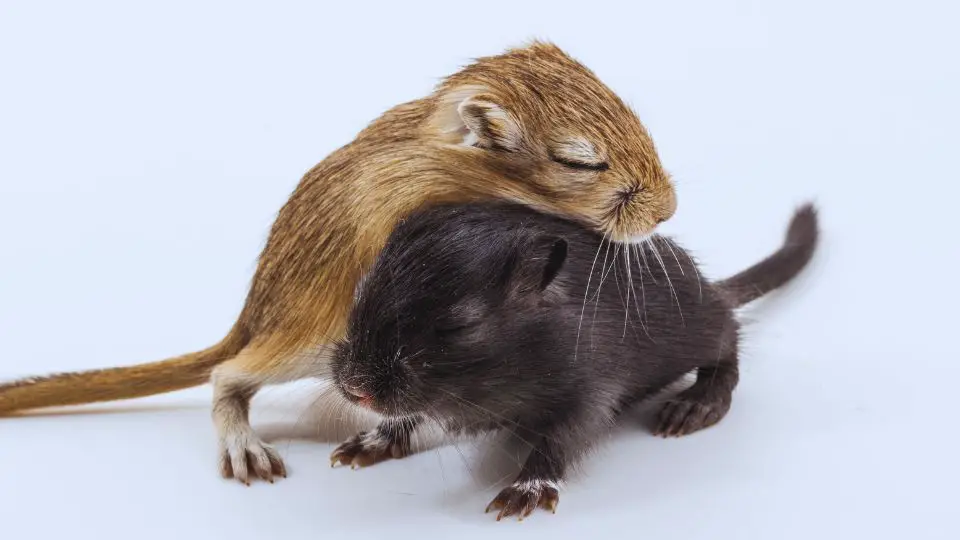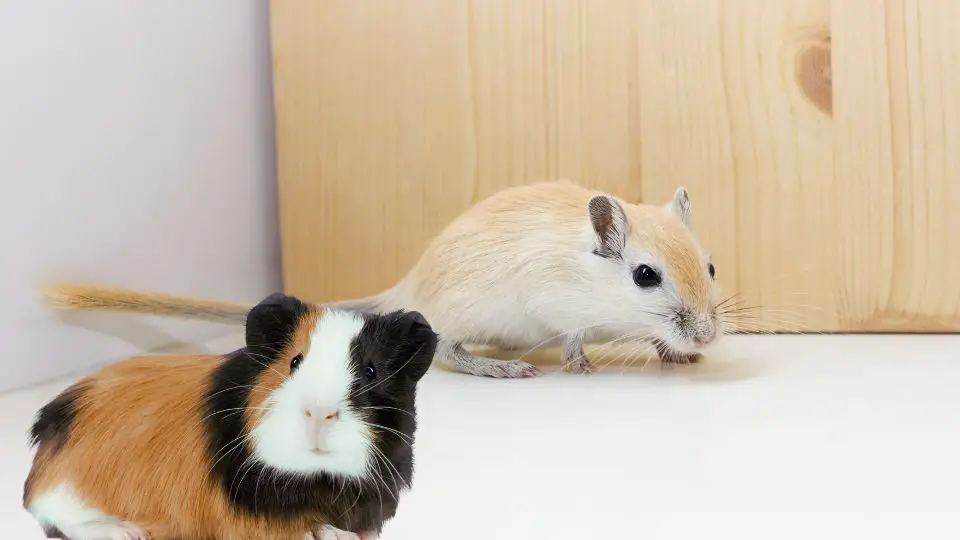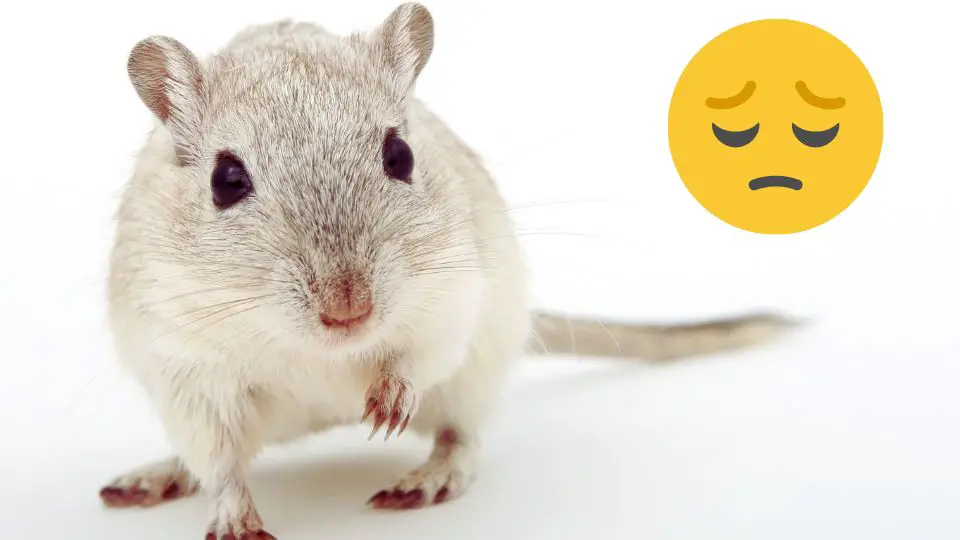Have you ever noticed gerbils sleeping in a pile or on top of each other? It’s an intriguing behavior that sparks curiosity among gerbil owners.
Gerbils sleep on top of each other to seek warmth, comfort, and a sense of security. It promotes social bonding and strengthens their group dynamics.
In this article, we will explore the reasons behind gerbils sleeping on top of each other and how it contributes to their overall behavior and group dynamics.
Gerbil sleeping behaviors
If you’ve ever observed gerbils during their sleep, you may have noticed a peculiar behavior: they often sleep in piles or on top of each other. This cozy and communal sleeping arrangement is quite common among gerbils and can provide valuable insights into their social nature and need for companionship.
Gerbils, being social animals, thrive on companionship and feel most secure when they are surrounded by their fellow gerbils. When it comes to sleeping, gerbils exhibit a remarkable preference for huddling together. This behavior serves several purposes and offers fascinating glimpses into their natural instincts and social dynamics about which we will talk next.
Comfort and warmth
Gerbils, with their small and delicate bodies, have an innate need for comfort and warmth. One of the fascinating ways they achieve this is by huddling together, often forming piles during their sleep. This behavior not only helps gerbils conserve body heat but also provides them with a sense of security and well-being.
Conservation of Body Heat
Gerbils are highly sensitive to temperature changes and prefer a warm environment. By huddling together, gerbils create a compact group where body heat is shared and preserved more effectively. The close proximity allows heat generated by each gerbil’s body to be distributed among the group, helping them maintain a stable and cozy temperature. This natural mechanism ensures that gerbils can stay warm even in colder surroundings.
Enhanced Comfort
Sleeping in a pile provides gerbils with a remarkable level of comfort. The softness of their bedding, combined with the warmth generated by their collective body heat, creates a cozy and cushioned sleeping environment.
The contact and physical closeness with their cage mates offer a sense of companionship, reassurance, and emotional comfort. This cozy arrangement mimics the safety and warmth of their burrows in the wild, evoking a feeling of security and contentment.
Sense of Security
Gerbils are prey animals and have an instinctual need for safety. Huddling together in a pile contributes to their sense of security. By sleeping in a group, gerbils create a united front that helps deter potential threats. The collective warmth and presence of their companions create a comforting barrier, making them feel less vulnerable during their sleep. This sense of security allows gerbils to rest peacefully and promotes overall well-being.
Social bonding and companionship
When gerbils sleep together, they not only find comfort and warmth but also engage in a vital aspect of their social behavior—promoting social bonding and strengthening their group dynamics.
When gerbils sleep together, they engage in a communal behavior that strengthens their social bonds. Sharing sleeping spaces creates opportunities for physical contact and mutual grooming, which not only enhances their physical well-being but also fosters emotional connections.
During sleep, gerbils can engage in social behaviors such as nuzzling, cuddling, or even playfully interacting with their cage mates. These interactions contribute to the development and maintenance of social bonds, ultimately promoting a harmonious group dynamic.
Sleeping together helps gerbils synchronize their behaviors and establish a sense of unity. It allows them to align their sleeping and waking patterns, leading to coordinated activities within the group. When gerbils sleep in piles or on top of each other, they create a shared rhythm and a cohesive sense of togetherness. This synchronization of sleep patterns contributes to their overall social cohesion and cooperative behaviors.
For gerbils in captivity, sleeping together is particularly important as they rely solely on their cage mates for companionship. Without social interaction and companionship, gerbils may experience loneliness and exhibit signs of stress or behavioral issues. Sleeping together provides a consistent source of companionship and emotional support, promoting their overall mental and emotional well-being.
Scent recognition and territoriality
Gerbils have a sophisticated olfactory system, relying heavily on their sense of smell to communicate, identify familiar individuals, and mark their territories. Scent recognition is pivotal in gerbil social dynamics and serves as a means of establishing social bonds and defining their space within the enclosure.
When gerbils sleep together, they share close physical proximity for extended periods, allowing their scents to mingle. This close contact enables gerbils to become familiar with each other’s unique scent signatures. This scent recognition helps gerbils identify their cage mates, distinguish friends from potential threats, and reinforce social bonds within the group.
Gerbils Not Sleeping Together
However, there may be instances when gerbils do not sleep together, displaying individual sleeping behaviors. Here are some possible reasons that we know why gerbils may not be sleeping together as expected:
- Individual preferences: Just like humans, gerbils have unique personalities and preferences. While it is common for gerbils to sleep in groups, some individuals may prefer to sleep alone. They might find comfort in their own sleeping spot or may simply have different sleeping patterns from their cage mates.
- Environmental factors: The sleeping behavior of gerbils can be influenced by their environment. If the cage or enclosure lacks sufficient space or suitable hiding spots, gerbils may choose to sleep separately to have their own personal space. Providing ample hiding places, tunnels, and cozy bedding options can encourage gerbils to sleep together.
- Dominance or territorial issues: In some cases, dominant gerbils may prevent their cage mates from sleeping together. Dominance behaviors can include chasing, nipping, or blocking access to certain areas. This can disrupt the harmony among gerbils, making them choose separate sleeping spots to avoid conflicts.
- Stress or illness: Gerbils experiencing stress or illness may exhibit changes in their sleeping behaviors. They may prefer solitude to recover or may feel uneasy around their cage mates. If you notice any signs of stress or illness in your gerbils, you should address the underlying cause and provide appropriate care.
- Introduction of new gerbils: When introducing new gerbils to an existing group, it may take some time for them to establish bonds and feel comfortable sleeping together. During the initial stages of introduction, gerbils may sleep separately until they become familiar with each other and form a cohesive group.
- Aging or personality clashes: As gerbils age, their preferences and behaviors may change. Older gerbils may become less inclined to sleep in piles or on top of each other due to physical discomfort or changes in their social dynamics. Additionally, personality clashes among gerbils can affect their sleeping arrangements, leading to individual sleeping patterns.
FAQ
Do gerbils sleep on their sides?
Gerbils typically do not sleep on their sides. They usually sleep curled up or in a compact position, often in piles or nests. Sleeping on their sides can indicate discomfort or illness, so if you notice your gerbil consistently sleeping on its side, it is advisable to consult a veterinarian.
Why are my gerbils sleeping separately?
There can be various reasons why gerbils choose to sleep separately. It could be due to differences in their individual preferences, hierarchy within the group, or simply a need for personal space. Gerbils may also sleep separately if they are feeling stressed or if the enclosure does not provide enough hiding places or nesting materials. Providing ample hiding spots and ensuring a comfortable environment can encourage gerbils to sleep together if they choose to do so.
How many hours do gerbils sleep?
Gerbils are naturally crepuscular, meaning they are most active during dawn and dusk. They typically sleep for several short periods throughout the day and night, totaling around 12 to 14 hours of sleep. This sleep pattern allows them to conserve energy while remaining alert to their surroundings.
Why is my gerbil sleeping out in the open?
Occasionally, gerbils may choose to sleep out in the open. This behavior could be a sign of their trust and comfort in their environment. When gerbils feel secure and safe in their enclosure, they may opt to sleep in exposed areas.
However, it’s essential to ensure that the sleeping areas are still available for them to use if they prefer more secluded spots. If your gerbil starts sleeping out in the open and displays other unusual behaviors or signs of illness, it’s advisable to consult a veterinarian for a thorough examination.
Conclusion
In conclusion, gerbils have a natural inclination to sleep on top of each other as it offers them several advantages. It provides warmth, comfort, security, and a sense of unity within the group. Sleeping in piles or on top of each other promotes social bonding, synchronization of behaviors, and reinforces their social hierarchy.
As owners, it’s important to create an environment that supports their natural sleeping behaviors, providing ample bedding and hiding spots. By understanding and respecting their social nature, we can ensure that our gerbil companions have the companionship and emotional support they need to thrive.







